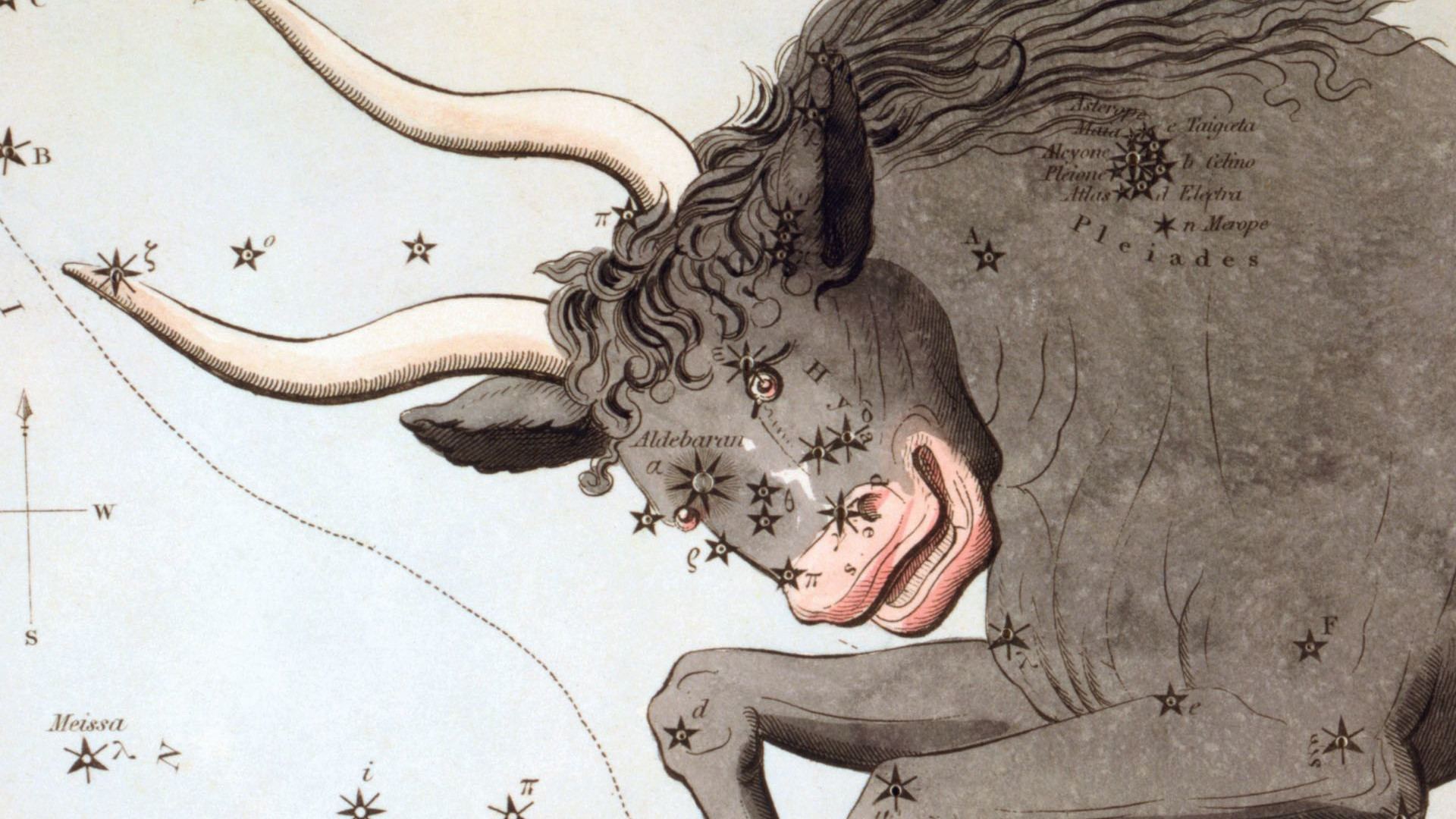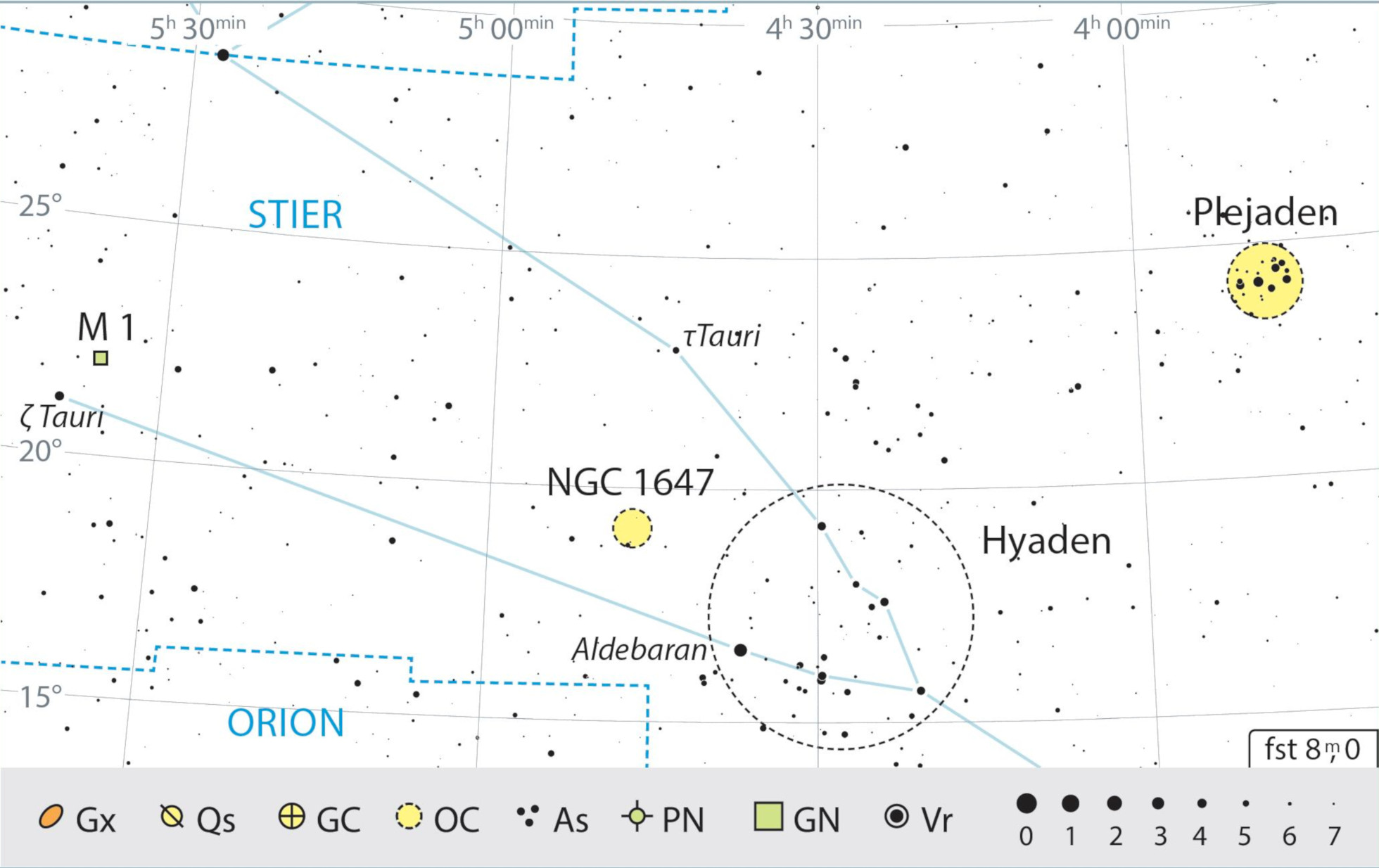Taurus
Adorning the constellation of Taurus are two neighbouring and eye-catching open star clusters, and the Messier catalogue’s only supernova remnant.
 While historic star charts depict a huge bull, usually only his eye, two horns and two star clusters are visible in the night sky with the naked eye.
While historic star charts depict a huge bull, usually only his eye, two horns and two star clusters are visible in the night sky with the naked eye.The constellation of Taurus is part of the most famous hunting scene in the firmament. Orion is the celestial hunter, who fights the angry bull with his two faithful canine hunting companions – Canis Major and Canis Minor – together with his club and shield. However, whereas Orion is clearly recognizable as a person with stars for his shoulder, belt and foot, only the head of the bull is visible. If you go eastwards from the orange star α Tau (Aldebaran), which symbolises the animal's blood-shot eye, you get to β and ζ Tau, which represent its two horns.
In addition, around the bull's eye there is the prominent star cluster Hyades (also known as the Rainy Ones), and the open star cluster Pleiades (known as the Seven Sisters) marks the bull's withers.
The numerous myths surrounding Taurus
According to Greek legend, we think of Orion’s battle with the bull, but the theme actually goes back to the Sumerians. In the Gilgamesh poem, which dates back to 4,000 years ago, the legendary king fights and defeats the Bull of Heaven, sent by the goddess Ishtar (Inanna). This battle between Gilgamesh and the Bull of Heaven is what we see in the firmament. Another well-known myth is the Greek story of the abduction of princess Europa. The Father of the Gods, Zeus, assumed the form of a white bull to kidnap her and take her to the island of Crete.
The ancient Egyptians also saw the form of a bull in the constellation. For example, the astronomical themes in the Dendera temple depict a bull with a solar disk between its horns. This is Apis, the holy bull venerated as a god.
Star clusters and the brightest supernova remnant
The Hyades and Pleiades star clusters are ideal objects to observe with binoculars. The V-shaped pattern of the Hyades is even visible to the naked eye, and through small binoculars many star pairs are visible. Of the seven stars in the Pleiades cluster, six stars can usually be seen sparkling with the naked eye, with binoculars or a small telescope with a wide-field eyepiece, many dozens of suns will also be visible. Besides these two prominent specimens, we should also mention star cluster NGC1647.
Beside these, the Messier catalogue’s only supernova remnant is located in this constellation; it is actually the first entry in the catalogue. The object is the result of a supernova explosion in 1054 and is known as M1 or the Crab Nebula. Even with binoculars it is visible as a small, faint, speck of nebula. Its special feature is the fact that the nebula’s glow does not originate from the temperature of its gases, instead it is caused by electrons that move around the nebula’s magnetic field lines at almost the speed of light, thereby emitting optical light.
 Outline map of the constellation of Taurus with our observing recommendations. J. Scholten
Outline map of the constellation of Taurus with our observing recommendations. J. ScholtenAuthor: Nico Schmidt / Licence: Oculum-Verlag GmbH
